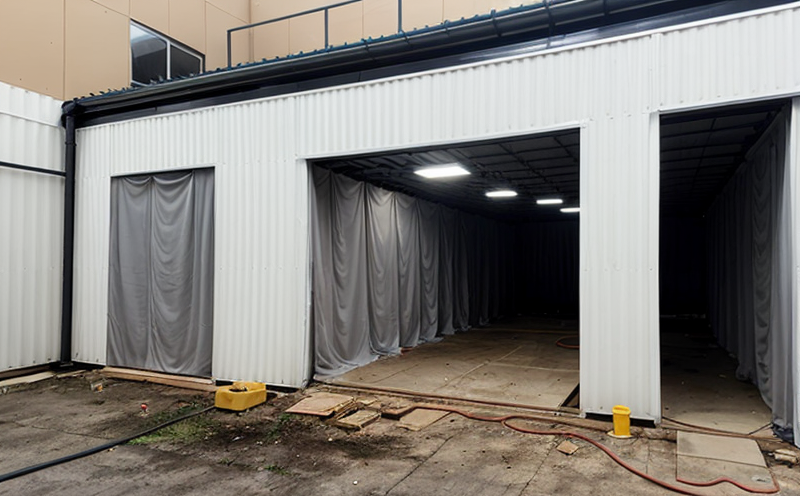Air Leakage Building Inspection
Air leakage in buildings is a critical issue that can lead to significant energy inefficiency and reduced comfort levels. Inadequate sealing of building envelopes leads to higher heating and cooling costs, increased wear on HVAC systems, and discomfort for occupants due to drafts and inconsistent temperatures.
The process of air leakage testing involves identifying and quantifying the amount of uncontrolled air flow into or out of a building envelope. This can be caused by gaps in windows, doors, walls, and other structural components. By detecting these leaks early on, it is possible to address them before they result in substantial energy losses.
Our service focuses on providing comprehensive testing solutions for various types of buildings including residential homes, commercial structures, schools, hospitals, and warehouses. We use state-of-the-art equipment such as blower door testers and infrared cameras which allow us to accurately measure the amount of air leakage present in your property.
Our team of experts will work closely with you throughout the entire process from initial consultation through final report generation. From understanding specific requirements based on local codes like ASHRAE 90.1 or ANSI/ANSI Z80-2015, to ensuring all necessary steps are taken during testing, our goal is always to provide accurate results that meet industry standards.
By addressing air leakage issues promptly you can expect improved energy efficiency, enhanced occupant comfort, reduced maintenance costs, and compliance with building codes. This not only contributes positively towards sustainability goals but also helps create healthier indoor environments for those who live or work within these spaces.
Applied Standards
| Standard | Description |
|---|---|
| ASHRAE 55-2017 | This standard establishes the parameters for creating and maintaining indoor environments that are conducive to human comfort. It includes criteria related to temperature, humidity, air movement, and other factors affecting thermal conditions. |
| ASTM E2356-15 | This test method covers the determination of air leakage rate through a building envelope using a blower door. The procedure involves applying known pressure differences between inside and outside the structure while measuring airflow. |
| ISO 9001:2015 | This international standard specifies requirements for quality management systems aiming at enhancing customer satisfaction through effective control of processes, products, and services. |
| EN 13788-2004 | The European Norm sets out the procedure for determining air tightness of buildings by means of pressure testing. It provides guidelines on how to conduct tests according to specified procedures. |
Customer Impact and Satisfaction
- Saves money - reduces heating/cooling costs by sealing leaks that allow conditioned air to escape.
- Better indoor air quality - eliminates drafts which can bring in dust, pollen, mold spores etc., thereby improving health of residents/workers.
- Enhanced comfort levels - consistent temperatures throughout the building create more comfortable environments for occupants.
- Compliance with codes and regulations - ensures that buildings meet local or national standards regarding energy efficiency and occupant safety.
International Acceptance and Recognition
The importance of air leakage testing is increasingly being recognized globally. Many countries have adopted similar methodologies to those outlined in ASHRAE, ASTM, ISO, and EN standards mentioned above.
For instance, the U.S., Canada, Australia, New Zealand all follow guidelines derived from these international bodies when it comes to assessing air tightness of buildings. This uniformity ensures consistency across different jurisdictions which is crucial for comparing data or participating in international collaborations on research into building science.
Furthermore, organizations like LEED (Leadership in Energy and Environmental Design) incorporate air leakage testing as part of their certification process. Achieving a LEED rating can significantly enhance the value and marketability of commercial properties by demonstrating commitment to sustainable practices.





